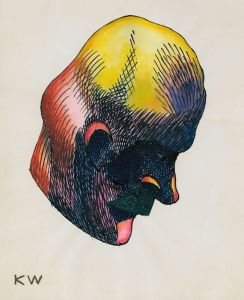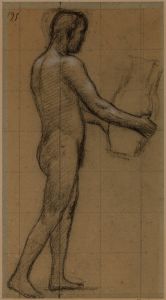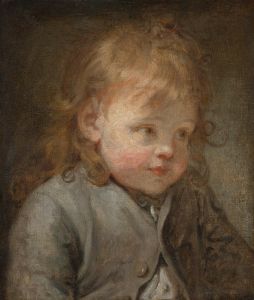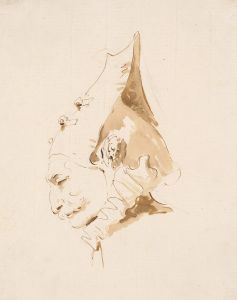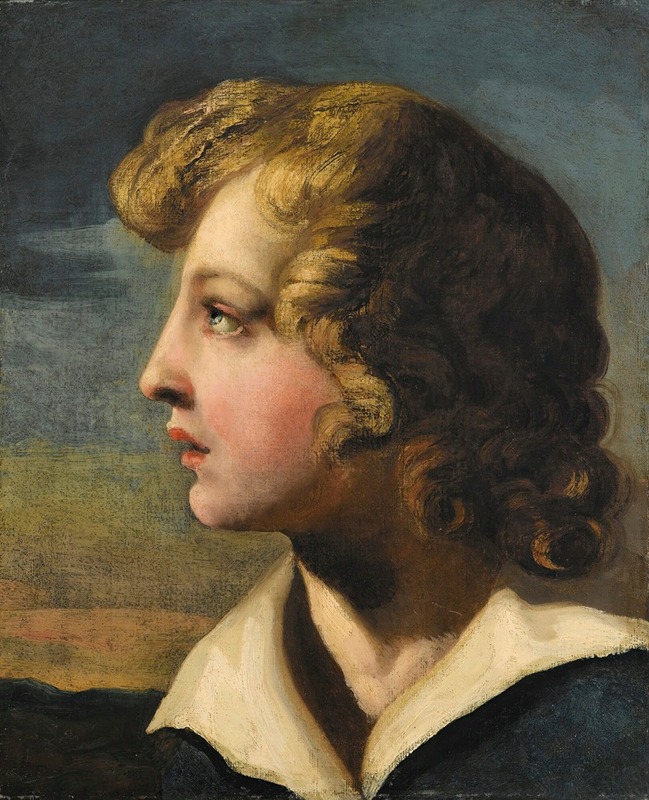
Portrait de jeune garcon de profil
A hand-painted replica of Théodore Géricault’s masterpiece Portrait de jeune garcon de profil, meticulously crafted by professional artists to capture the true essence of the original. Each piece is created with museum-quality canvas and rare mineral pigments, carefully painted by experienced artists with delicate brushstrokes and rich, layered colors to perfectly recreate the texture of the original artwork. Unlike machine-printed reproductions, this hand-painted version brings the painting to life, infused with the artist’s emotions and skill in every stroke. Whether for personal collection or home decoration, it instantly elevates the artistic atmosphere of any space.
"Portrait de jeune garçon de profil" (Portrait of a Young Boy in Profile) is a painting by the French artist Théodore Géricault, who is renowned for his contributions to the Romantic movement in the early 19th century. Géricault, born on September 26, 1791, in Rouen, France, is best known for his dramatic and emotive works, including "The Raft of the Medusa," which remains one of his most celebrated masterpieces.
The exact date of "Portrait de jeune garçon de profil" is not definitively known, but it is believed to have been created during the early part of Géricault's career, possibly around the 1810s. This period was marked by his exploration of various subjects and styles, as he sought to establish his artistic identity.
The painting depicts a young boy in profile, showcasing Géricault's keen ability to capture the essence and character of his subjects. The boy's features are rendered with meticulous attention to detail, highlighting the artist's skill in portraiture. The use of light and shadow in the painting demonstrates Géricault's understanding of chiaroscuro, a technique that enhances the three-dimensionality of the figure.
Géricault's interest in human expression and emotion is evident in this portrait. The boy's serene and contemplative expression suggests a moment of introspection, inviting viewers to ponder the thoughts and feelings of the young subject. This focus on the inner life of his subjects is a hallmark of Géricault's work, reflecting the Romantic era's emphasis on individualism and emotional depth.
The background of the painting is relatively simple, allowing the viewer's attention to remain on the boy's profile. This compositional choice is typical of many of Géricault's portraits, where the subject is often isolated against a plain or minimally detailed backdrop. This technique serves to emphasize the subject's presence and personality.
"Portrait de jeune garçon de profil" is an example of Géricault's early mastery of portraiture, a genre that he continued to explore throughout his career. While he is primarily known for his larger, more dramatic works, his portraits reveal a more intimate and personal side of his artistic practice.
Théodore Géricault's life was tragically short; he died on January 26, 1824, at the age of 32. Despite his brief career, he left a lasting impact on the art world, influencing subsequent generations of artists. His works are celebrated for their emotional intensity, technical skill, and innovative approach to traditional subjects.
Today, "Portrait de jeune garçon de profil" is appreciated not only for its artistic merit but also as a window into the early development of one of France's most important Romantic painters. The painting is held in various private collections and museums, where it continues to be studied and admired by art enthusiasts and scholars alike.






